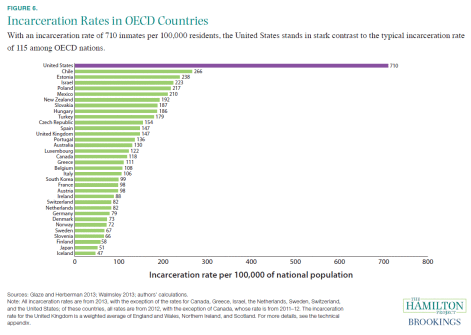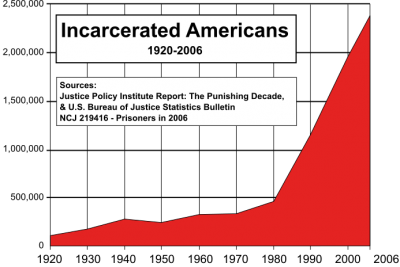Subject to an unregulated free market for labor, Polanyi believed that “workers would die as the victims of acute social dislocation through vice, perversion, crime, and starvation”. The US has the most “flexible” labor market of all OECD countries, meaning the freest market for labor, with the least intervention by government or social institutions, as defined by Polanyi. “Essentially, to get high ratings, a country must have low marginal tax rates, a low minimum wage, a high degree of flexibility in hiring and firing, a small amount of centralized collective bargaining, and low unemployment benefits” (Lawson, Robert A. & Bierhanzl, 2004 p. 122). Advocates of laissez-faire “free market” policies believe that the threat of starvation will motivate people to seek employment. The number of people on food assistance reached an all-time high after the 2008 financial crisis, and currently in the U.S. around one of six people in the country (14% as of Jan 13, 2015, US Dept. Ag[1]), and one in five of children (US Census Bureau, Jan. 28, 2015)[2] are on the Supplemental Nutritional Assistance Program (SNAP), formerly known as food stamps. Polanyi’s claim that without mitigating social institutions, an unregulated free market in labor would result in starvation is proven to be true. Without SNAP these people would starve.
Topics:
Editor considers the following as important: Uncategorized
This could be interesting, too:
tom writes The Ukraine war and Europe’s deepening march of folly
Stavros Mavroudeas writes CfP of Marxist Macroeconomic Modelling workgroup – 18th WAPE Forum, Istanbul August 6-8, 2025
Lars Pålsson Syll writes The pretence-of-knowledge syndrome
Dean Baker writes Crypto and Donald Trump’s strategic baseball card reserve
Subject to an unregulated free market for labor, Polanyi believed that “workers would die as the victims of acute social dislocation through vice, perversion, crime, and starvation”. The US has the most “flexible” labor market of all OECD countries, meaning the freest market for labor, with the least intervention by government or social institutions, as defined by Polanyi. “Essentially, to get high ratings, a country must have low marginal tax rates, a low minimum wage, a high degree of flexibility in hiring and firing, a small amount of centralized collective bargaining, and low unemployment benefits” (Lawson, Robert A. & Bierhanzl, 2004 p. 122). Advocates of laissez-faire “free market” policies believe that the threat of starvation will motivate people to seek employment. The number of people on food assistance reached an all-time high after the 2008 financial crisis, and currently in the U.S. around one of six people in the country (14% as of Jan 13, 2015, US Dept. Ag[1]), and one in five of children (US Census Bureau, Jan. 28, 2015)[2] are on the Supplemental Nutritional Assistance Program (SNAP), formerly known as food stamps. Polanyi’s claim that without mitigating social institutions, an unregulated free market in labor would result in starvation is proven to be true. Without SNAP these people would starve.
Increase in incarceration with neo-liberal era
The United States has 5% of the world population and 25% of the prison inmates. The incarceration rate is more than double all other OECD countries. It is noteworthy that the era of neo-liberal supremacy began with the election of Ronald Reagan in 1980, and accelerated with the collapse of the Soviet Union in 1991. Policies in the US became more consistent with unregulated markets than ever before, in accord with Margaret Thatcher’s claim that “There is No Alternative” (TINA), to the “Washington Consensus” of privatization, liberalization, free trade, free movement of capital, structural adjustment, and all the other policies promoted by market fundamentalists since 1980. There was an inflection point in 1980 when US incarceration rates began to increase drastically (figure 16). Before that time the US was in line with other OECD countries. This increased incarceration was not a result of an increase in violent crime as the violent crime rate dropped during this same period. Although it cannot be directly blamed on flexible labor markets, this increase in incarceration rate is consistent with Polanyi’s claim that treating labor as a market commodity will result in “crime and starvation”.
Gary Flomenhoft
Escaping the Polanyi matrix: the impact of fictitious commodities: money, land, and labor on consumer welfare


